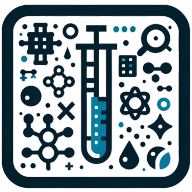In today's world, the importance of a drug-free workplace cannot be overstated. This blog post will guide you through the process of setting up a drug testing program in your organization. We'll cover everything from understanding the legal implications to selecting the right testing methods, ensuring confidentiality, and managing the results.
Understanding the Legal Implications
Before implementing a drug testing program, you need to understand the legal implications. Laws vary by country and state, so it's crucial to consult with a legal expert.
In the United States, for example, the Drug-Free Workplace Act of 1988 requires some federal contractors and all federal grantees to agree that they will provide drug-free workplaces as a precondition of receiving a contract or grant from a federal agency.
However, the Act does not require drug testing. It's up to the employer to decide whether to test employees for drug use. If you decide to implement a drug testing program, you must ensure that it complies with state and federal laws.
In addition, you must consider the rights of your employees. The Fourth Amendment of the U.S. Constitution protects individuals from unreasonable searches and seizures. Courts have found that drug testing can be a "search" under the Fourth Amendment. Therefore, your drug testing program must be reasonable and not violate your employees' rights.
Selecting the Right Testing Methods
Once you've understood the legal implications, the next step is to select the right testing methods. There are several types of drug tests, including urine tests, blood tests, hair tests, and saliva tests.
Urine tests are the most common type of drug tests. They are relatively inexpensive and can detect a wide range of drugs. However, they can only detect recent drug use.
Blood tests are the most accurate type of drug tests. They can detect the presence of drugs in a person's system at the time of the test. However, they are more expensive and invasive than urine tests.
Hair tests can detect drug use over a longer period than urine or blood tests. However, they cannot detect recent drug use.
Saliva tests are less invasive than urine or blood tests. They can detect recent drug use, but they cannot detect drug use over a longer period.
When selecting a testing method, you should consider the type of drugs you want to test for, the period of detection, the cost, and the invasiveness of the test.
Ensuring Confidentiality
Ensuring confidentiality is a crucial aspect of a drug testing program. You must protect the privacy of your employees and maintain the confidentiality of their test results.
You should have a clear policy on who will have access to the test results and how they will be used. The policy should be communicated to all employees.
You should also ensure that the testing process is confidential. For example, if you are using urine tests, you should provide a private restroom for the employees to provide the sample.
In addition, you should ensure that the test results are stored securely. They should not be accessible to unauthorized individuals.
Managing the Results
Managing the results is another important aspect of a drug testing program. You should have a clear policy on what will happen if an employee tests positive for drugs.
The policy should be fair and consistent. It should not discriminate against any employee.
You should also provide support for employees who test positive for drugs. This could include referral to a substance abuse professional or an employee assistance program.
In addition, you should consider the implications of false positives. Some medications and foods can cause a positive result on a drug test. Therefore, you should confirm positive results with a second test or a different testing method.
Training and Education
Training and education are key components of a drug testing program. You should provide training for your managers and supervisors on how to implement the program and how to handle situations related to drug use.
You should also educate your employees about the dangers of drug use and the benefits of a drug-free workplace. This could include workshops, seminars, or online courses.
In addition, you should provide information about the drug testing program to your employees. This could include the reasons for the program, the testing methods, the consequences of a positive result, and the measures to ensure confidentiality.
Reviewing and Updating the Program
Finally, you should regularly review and update your drug testing program. This will ensure that it remains effective and compliant with laws and regulations.
You should monitor the results of the program and make adjustments as necessary. For example, if you find that the program is not deterring drug use, you may need to change your testing methods or increase the frequency of testing.
You should also keep up to date with changes in laws and regulations related to drug testing. This will ensure that your program remains legal and ethical.
Wrapping Up: Implementing a Drug Testing Program
Implementing a drug testing program in your organization can be a complex process. However, with careful planning and execution, you can create a program that promotes a drug-free workplace and complies with laws and regulations. Remember, the key to a successful program is to ensure fairness, confidentiality, and support for your employees.

